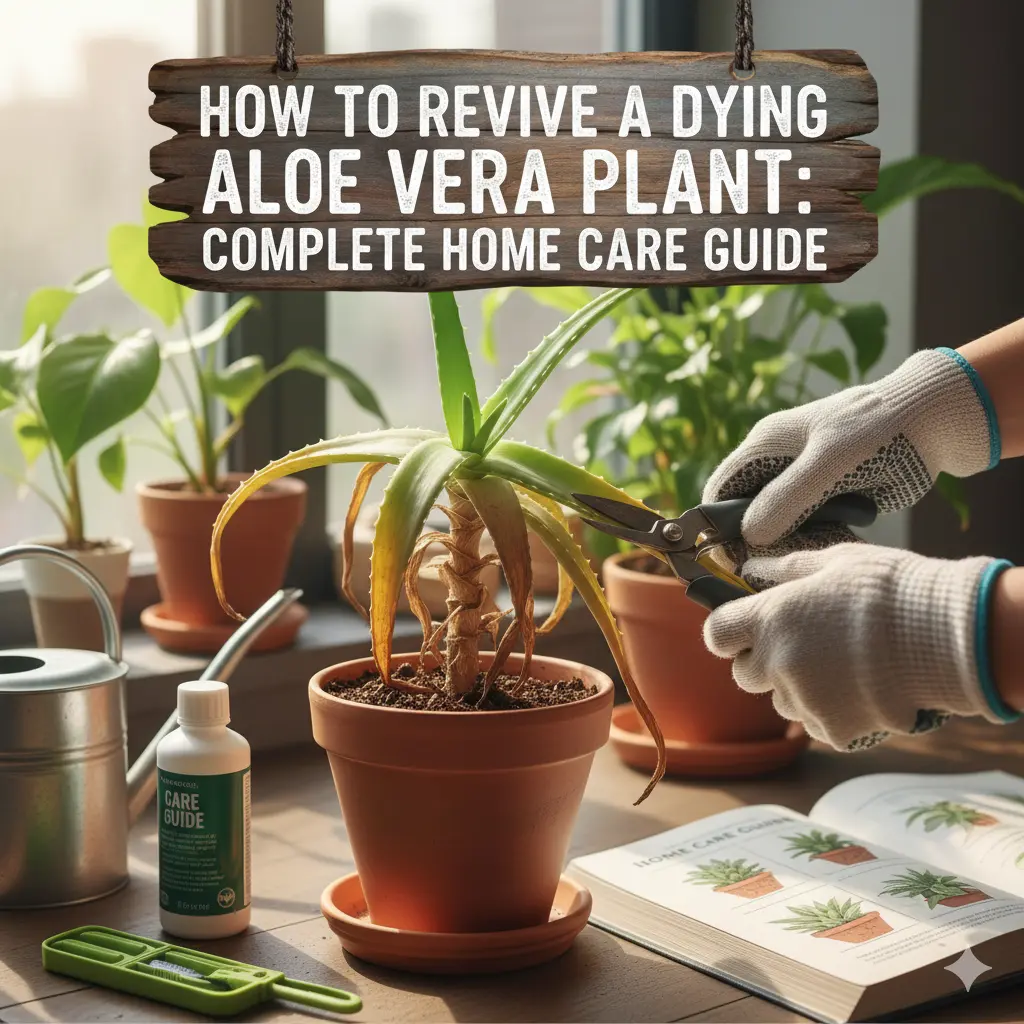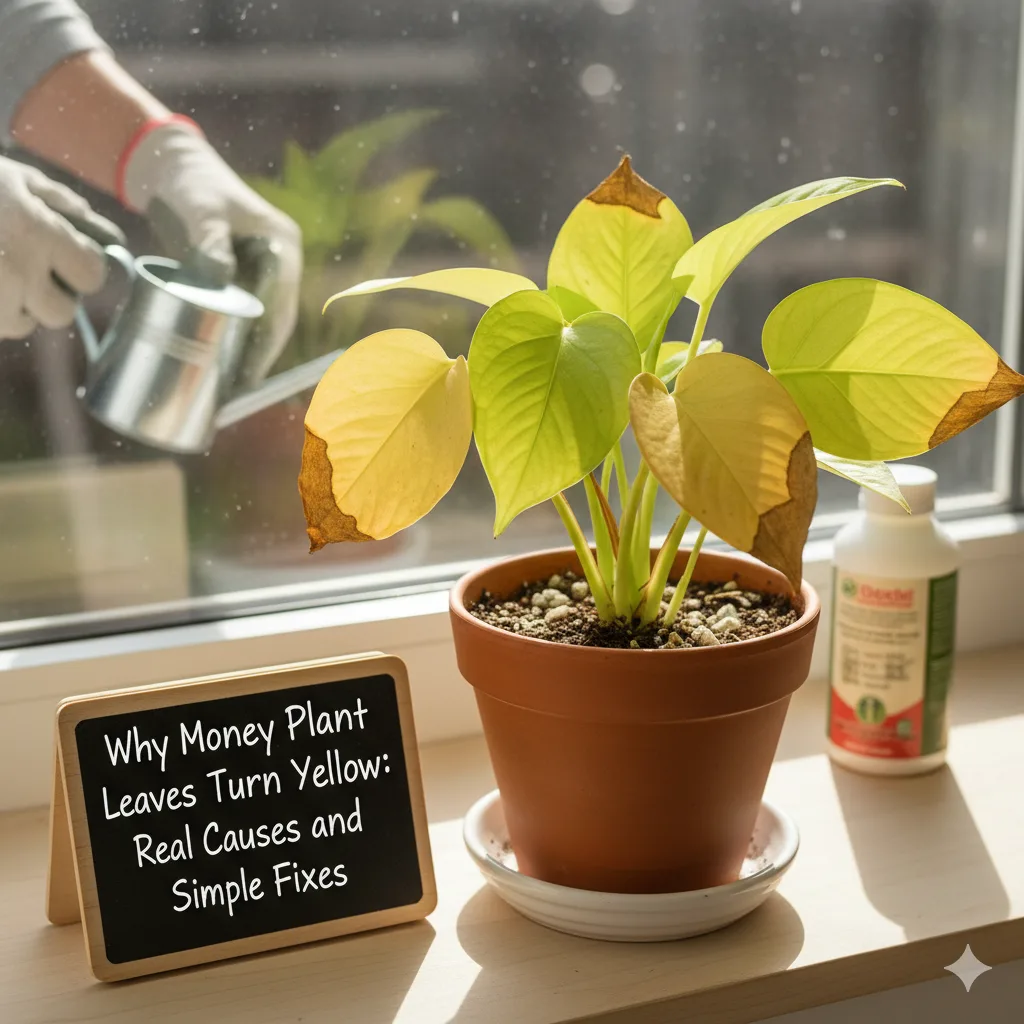How to Revive a Dying Aloe Vera Plant: Complete Home Care Guide
Aloe vera is a hardy plant, but it can still start dying due to watering mistakes, poor soil, or sunlight issues. Here’s a simple, practical guide to revive your aloe vera quickly at home.

How to Revive a Dying Aloe Vera Plant: Complete Home Care Guide
Aloe vera is one of the easiest plants to grow, but even the strongest plants can start looking dull, weak, or completely lifeless when their basic needs are not met. If your aloe vera has soft, droopy, brown, or mushy leaves, don’t panic. Most aloe vera plants can be revived with a few simple changes. The key is to understand what went wrong and fix it before the damage spreads.
In this article, I’ll walk you through the real causes behind a dying aloe vera plant and give you easy, effective solutions you can try at home. No chemicals, no expensive fertilizers—just simple plant care that actually works.
1. Overwatering: The Most Common Reason
Aloe vera stores water in its leaves, which means it doesn’t need frequent watering. Overwatering leads to root rot, making the leaves soft, mushy, and bent. If your plant feels too squishy, this is likely the reason.
How to fix: Stop watering immediately. Let the soil dry completely. If the roots smell foul or look black, repot your aloe in fresh, dry soil. Water only once every 2–3 weeks.
2. Wrong Soil Type
Aloe thrives best in fast-draining soil. Regular garden soil traps moisture and suffocates the roots, which leads to yellowing and drooping leaves.
Fix: Use a cactus or succulent mix. If you don’t have it, make your own by mixing 50% normal soil + 25% sand + 25% perlite.
3. Low Light or Too Much Sun
Aloe vera needs bright light, but too much direct afternoon sunlight can burn its leaves, turning them brown or reddish. Low light makes them stretch out and weaken.
Solution: Place the plant in bright, indirect sunlight. Morning sun is perfect. Avoid harsh midday heat.
4. Incorrect Pot Size
If the pot is too big, water stays in the soil longer than needed. If it’s too small, roots don’t get enough space to grow. Both situations can make the plant weak.
Fix: Choose a pot that is just slightly bigger than the root ball and must have drainage holes.
5. Cold Temperature Stress
Aloe hates cold weather. Exposure to cold wind or AC air can damage the leaves, making them soft and brown.
Solution: Keep your aloe indoors during winter and away from direct cold drafts.
6. Pest Attack
Mealy bugs and mites love hiding near the base of the leaves. They suck sap from the plant, making it dull and weak.
Home remedy: Spray neem oil mixed with water every 7 days until pests disappear. You can also clean leaves gently with a cotton pad dipped in diluted neem solution.
How to Revive Your Aloe Step-by-Step
- Check the roots. If they are healthy (white and firm), keep the plant. If not, cut the rotten parts.
- Repot into dry, well-draining soil.
- Place it in bright, indirect sunlight.
- Do not water for at least 7–10 days after repotting.
- Water only when the soil is completely dry.
Final Thoughts
A dying aloe vera doesn’t mean you’ve failed as a plant parent. These plants are naturally tough and bounce back quickly once their core needs are met. Whether your aloe is drooping, yellowing, or turning mushy, the solutions are simple: correct watering, good sunlight, and proper soil.
Give your aloe vera a little attention and patience, and you’ll soon see fresh green growth again. A healthy aloe plant not only looks beautiful—it also gives you long-lasting benefits like natural gel for skincare, minor burns, and home remedies.




